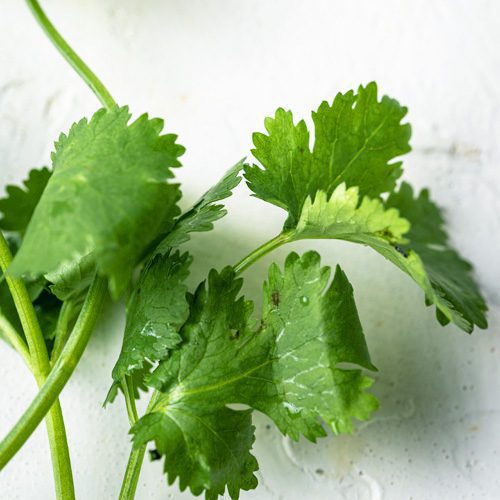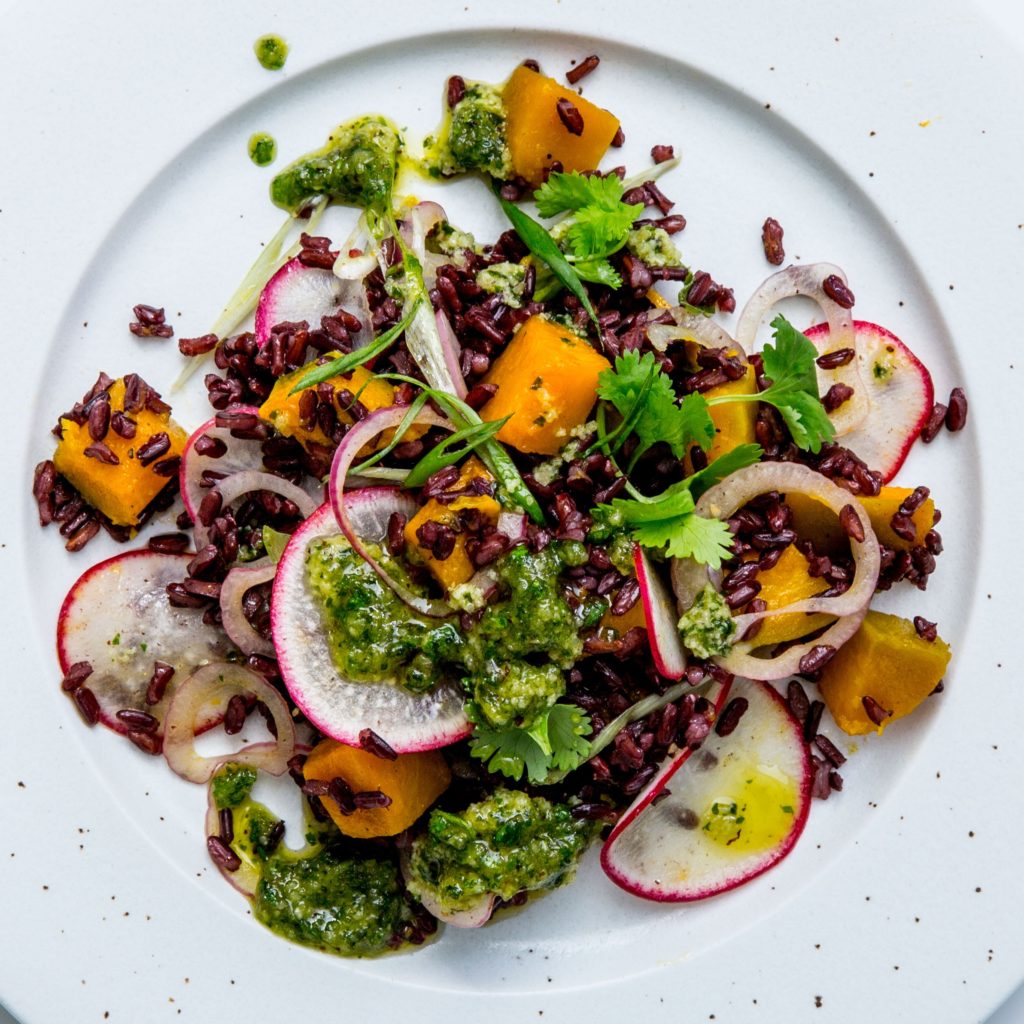Cilantro
Latin name: Coriandrum sativum
🌱 Days to Sprout: 5-21
😋 Ready for Full Dose of plant food with true leaves or roots .5-inch long
✂️ Thin to: 3 plant per yCube
🍅 Days to Maturity: 50-55
💡 Light Zone: Low
📏 Plant Size: 1 ft
💚 Care Level: Beginner
Origin
Believed to have originated in the Mediterranean, Cilantro expanded throughout Asia and into Europe. Early texts such as the Bible and Arabian Nights refer to Cilantro, and it was one of the first herbs brought to the New World.
Qualities
Cilantro has a bright, floral-citrus flavor and is from the same family as celery and carrots. It contains high levels of carotenoids, which are an antioxidant and protect cells from free radicals. Cilantro has a high level of vitamin A, which is good for the immune system, vision, and children's physical development. To some people, Cilantro tastes "soapy" instead of citrusy due to a shared genetic difference in how they smell and taste the herb.
Use
Cilantro leaves and tender stems are great for adding a punch of fresh flavor to almost any dish. It is especially prevalent in South American and Asian cuisines. Try adding Cilantro to salads, salsas, rice dishes, or stir-fries. The plant's flavor can intensify when flowers grow, which are edible. Cilantro seeds, known as coriander, are also edible and delicious in dishes whole or ground.
Care & Harvest
💡Temperature: Prefers cooler temperatures (60-70°F). If placed in higher temperatures, it can turn bitter and bolt.
✂️ Pruning: Remove leaves with brown spots if they appear. Check the roots monthly and trim any that are brown or extending past the yPod.
🔎 Plant Health: Aphids are a common pest, but you can use our prevention and treatment tricks to keep pests at bay!
🌿 Harvest: Harvesting frequently helps prolong the plant's life. Once the plant reaches 6 inches tall, you can begin trimming the larger, outer leaf stalks by cutting at the base of each stem. You can also pinch off individual leaves, or use clean shears to cut stems above growth nodes. Leave 1/3 of the plant if you want it to keep growing.
Harvest To Plate Recipe
Black Bean & Rice Salad with Cilantro Pesto
Photo / Recipe Source: Bon Appetit
Ingredients
1 cup Brazil nuts
1 small kabocha squash, peeled, seeded, cut into ½-inch pieces
1½ cups olive oil
3 tablespoons unseasoned rice vinegar
2 teaspoons freshly grated lime zest
1 tablespoon fresh lime juice
Kosher salt, freshly ground pepper
1 garlic clove, chopped
1½ cups cilantro leaves with tender stems, divided6 radishes, very thinly sliced
3 scallions, thinly sliced
1 shallot, very thinly sliced
3 cups cooked black rice (from about 1½ uncooked)
Instructions
Preheat oven to 350°. Once to temperature, toast Brazil nuts on a rimmed baking sheet, tossing once, until golden brown, 10–12 minutes. Let cool.
Toss squash and oil in an 8×8″ baking dish. Roast until squash is fork-tender, 30–40 minutes. Let cool, then strain oil into a small bowl and set squash aside.
Whisk vinegar, lime juice, and 3 Tbsp. squash oil in another small bowl. Season vinaigrette with salt and pepper.
Purée Brazil nuts, garlic, lime zest, 1 cup cilantro, and remaining squash oil in a food processor until smooth. Season pesto with salt and pepper.
Toss radishes, scallions, shallot, black rice, vinaigrette, reserved squash, and remaining ½ cup cilantro in a large bowl; season with salt and pepper.
Drizzle some pesto over salad.
Tip: Save any extra pesto and stir into yogurt or labneh, or serve with cheese and crackers!
Do Ahead: Kabocha squash can be cooked 1 day ahead. Keep in oil, cover, and chill.
Our Plant Health & Nutrition Team thoroughly tests each variety we offer to bring you the most flavorful and high-quality plants. We regularly rotate our plant portfolio, so please note, availability varies.


